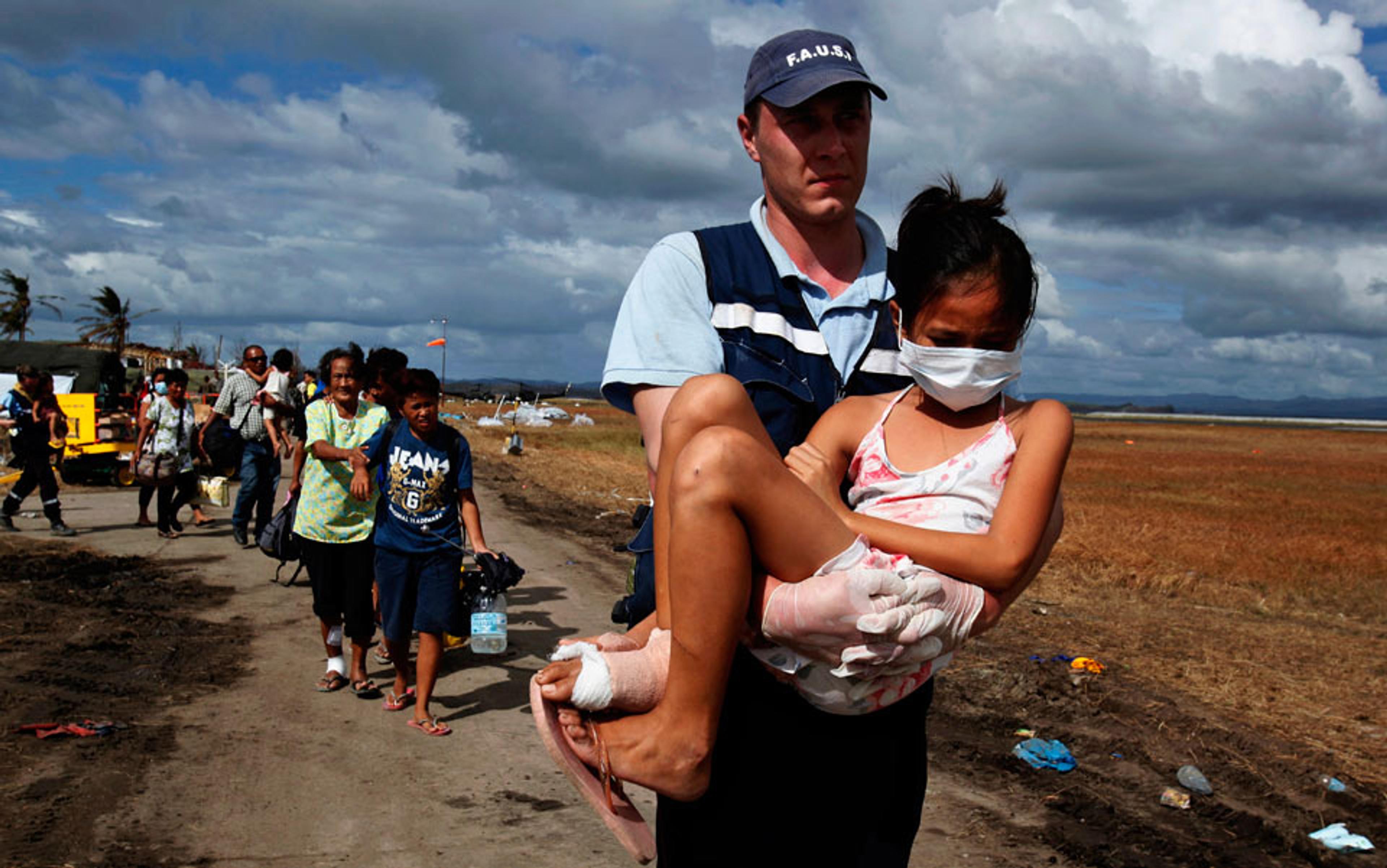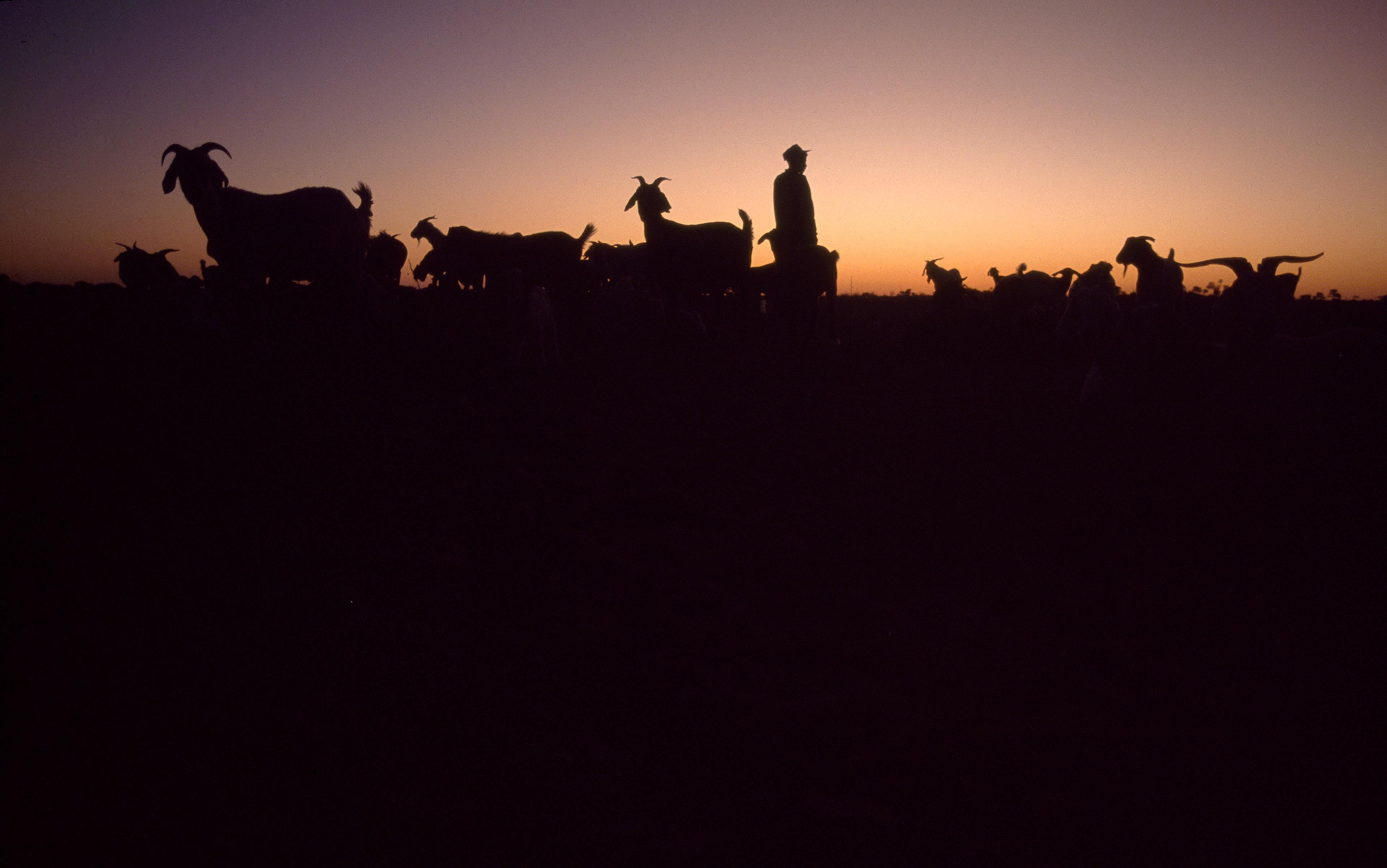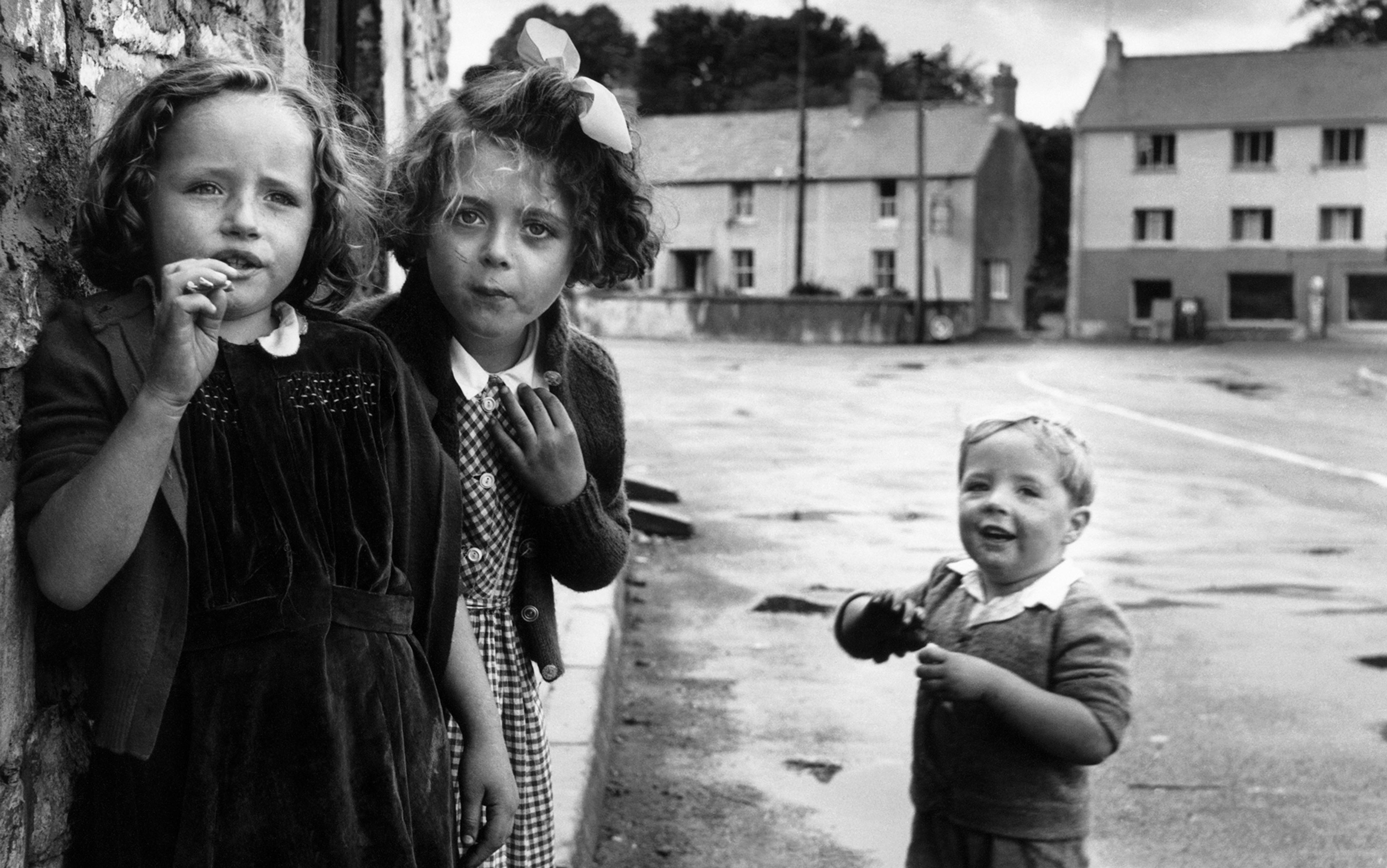Every week at the office, you and your fellow employees have meetings to discuss progress on group projects and to divide tasks efficiently. Perhaps in the evening, you go home and cook dinner with your partner. At least once in your life, you might have seen a team of firefighters work together to extinguish a fire at a burning house and rescue those inside. You have probably also witnessed or participated in political demonstrations aimed at bettering the treatment of those in need. These are all examples of human cooperation toward a mutually beneficial end. Some of them seem so commonplace that we rarely think of them as anything special. Yet they are. It is not obvious that any of the other great ape species cooperate in such a way – spontaneously and with individuals they have never before met. Though there has been some evidence of cooperation in other great apes, the interpretation of studies on ape cooperation has also been contested. In the human case, cooperation is unequivocal.
The evolution of cooperation has been of interest to biologists, philosophers and anthropologists for centuries. If natural selection favours self-interest, why would we cooperate at an apparent cost to ourselves? You might say that none of these examples is costly; they all benefit the person cooperating as well as the recipient of the cooperation. This is true, but there is still a puzzle to solve. If I can reduce the cost of cooperating by deception – pretending to pull my weight in the group project or in the rescue mission – and still reap the benefits, why would I not do so? This is known as the ‘free-rider’ problem.
This kind of problem also arises in the very first forms of human cooperation. Group hunting is one such activity, possibly occurring as early as 2 million years ago. Imagine a group of our ancestors carrying spears, tracking a bovid animal like a wildebeest. If the hunt takes the form of an ambush, the group would need to coordinate with each other to surround the prey and attack it at the same time, without being noticed. If the hunt takes the form of a chase, the group would need to coordinate when they move forward and from what angle. They might also need to collectively figure out how to shepherd the target away from its herd. While some have found that chimpanzees cooperate in group hunting, this is not true of all chimpanzee groups. Indeed, others have argued that chimpanzee hunting is often characterised by individuals trying to maximise their own gain. That is, they do not work collaboratively with others nor do they bring food back to a central location for sharing, but rather fight over the spoils competitively. This usually occurs in the form of harassing the captor of the prey since the captor would not do well by attempting to protect a carcass that was too large to monopolise from the forces of several hungry predators.
However, environmental changes approximately 2 million years ago meant that choosing to forage individually was no longer optimal and it became necessary to collaborate with others to secure better game. Global cooling and drying trends resulted in an expansion of open environments. This change in habitat was coupled with an increase in terrestrial monkeys such as baboons who competed with early hominins for their usual means of subsistence in fruits and vegetation, creating selection pressure for hominins to find a new foraging niche. So, early human group hunting looked quite different from that of the other great ape species. It involved coordination and cooperation as well as division of the spoils, even among those who did not engage in the hunt. As with our earlier examples, this kind of mutually beneficial cooperation would seem to involve an incentive to free-ride or deceive others, as an individual would do better by lagging behind in the hunt and ensuring the gain at minimal cost, if they could get away with it. Yet this is not typically what we see in practice. So what could explain why human group hunting is so cooperative?
The anthropologist Kristen Hawkes has argued that the reason men take part in a collaborative hunt is to signal their mating quality to potential partners. On this view, collaborative hunting is not primarily a form of providing food for one’s family but is instead a means of ‘showing off’ or sending a ‘costly signal’. In other words, if an individual’s quality is not directly observable, they are incentivised to advertise it either for sexual access or resource attainment. Such advertisements may take the form of risky displays or energy-intensive activities. Of course, it would also be profitable for ‘low-quality’ individuals to deceive others about their mating quality. The proposal is that, in general, the receiver of the signal is able to determine when senders are honest about their quality because of the cost entailed in signalling – a low-quality mate could not afford to engage in the risky or energy-intensive activity.
However, there are many problems with this explanation for why men hunt. First, hunting is a collective activity where it is difficult to observe individual contributions that would correspond to mating quality. Second, it does not seem that costs are greater for the less-skilled – the whole group might do less well with lower-quality hunters but it’s unclear that the individual hunter does less well if he is low quality. Third, we would expect individuals to withdraw from costly hunting if they were less skilled – it would only advertise their low quality and they would pay the costs of signalling – but we do not see this in reality. Finally, in a study of 10 forager societies, it was found that, on average, male hunting generates 68 per cent of the group’s calories, compared with female foraging which generates 32 per cent; male hunting also provides 88 per cent of total protein sources compared with just 12 per cent from gathering. This shows that hunting is, in fact, a good means of provisioning for one’s family. So, it seems the costly signalling hypothesis is not well supported by ethnographic evidence. Provisioning offers an explanation for why men hunt, but we still face a free-rider problem. It does not necessarily require the effort of an individual hunter to ensure his family is provisioned as long as the hunting party meet a threshold level of engagement for a successful hunt, and the individual hunter’s lack of contribution goes unnoticed.
My theory for why cooperation in hunting is sustained is different. To get there, I will first have to introduce some game theory. Game theory is the study of strategic interactions between individuals. We represent a game of mutual benefit as a Stag Hunt. In this game, players have two options – hunting stag or hunting hare, and they choose simultaneously so they do not know what the other will do. Both individuals would do best by cooperating and jointly acquiring a stag. However, they also have the option of going on a solo hare-hunting excursion. If they do so, and the other person goes for the stag, the hare-hunter gets a reasonably good payoff, but the stag hunter gets nothing. If both go for the hare, each gets a lower payoff than they would if only one hunted hare, but at least they get something. So hunting hare is considered the ‘risk-dominant’ option – it has a lower payoff than if both people hunted stag, but is attractive because it ensures you never end up with nothing. Really, a group hunt is a Stag Hunt game involving multiple players, but I will use the simpler two-person example for now.
If we don’t end up cooperating, we lose out on future beneficial interaction
How can we ensure cooperation in a Stag Hunt? One option is via commitment. A commitment is a pre-play signal (a signal that occurs before the choices are made) that changes an individual’s incentives for some future course of action, as well as changing her partner’s expectation of her future course of action. The signal need not be verbal. A commitment in the Stag Hunt game might involve, for example, picking up one’s spear or simply going on the hunting excursion. This changes the receiver’s expectations of what the sender of the signal will do. If the receiver believes the sender is going to go stag-hunting rather than hare-hunting, the receiver is also incentivised to go stag-hunting, since this ensures a better payoff for both. The sender is also incentivised to follow through on his signalled commitment to choose to hunt the stag. If he subsequently chooses to go hare-hunting, not only will he receive a lower payoff, but he will also be subject to social sanctions imposed by the receiver for violating her expectations. That is, the commitment is made credible because there is a reputational cost to reneging. Someone who commits and does not follow through reveals themselves to be an unreliable partner and so will be less likely to be chosen for mutually beneficial interaction in the future, meaning there is a cost to reneging. I believe commitment is large part of the reason humans have become so profoundly cooperative compared with other great ape species.
So far, this has all been theoretical. I have shown how, in theory, commitments could solve a coordination dilemma in a Stag Hunt game, but I have not shown that this is actually the mechanism ensuring cooperation in early hominin group hunting. To do so, I must show, first, that there are future opportunities for beneficial interaction and, second, that reneging is punished by social exclusion. If these conditions are met, a signal to cooperate really does change sender incentives to cooperate since, if we don’t end up cooperating, we lose out on future beneficial interaction. To establish this empirically, I will use evidence from modern hunter-gatherer societies. Of course, the analogy between the practices of modern hunter-gatherers and our ancestors is not perfect. In particular, you might worry that I am crediting our ancestors with more advanced cognitive skills than were present at the time. However, this shouldn’t be a worry for our current case – all that is needed for reputation consequences to change the incentives of the sender of the commitment signal is that we have some concept of preferential partner choice, and this capacity is demonstrated even in chimpanzees.
First, future opportunities for beneficial interaction exist because of the interconnected nature of hunter-gatherer communities. Individuals rely on one another for food and collective care of offspring, among other things. For example, recent anthropological evidence from modern forager societies reveals that, in some societies, newborns are held by alloparents 85 per cent of the time in the first days after birth. In this kind of social world, maintaining future opportunities for cooperative interaction is paramount.
Second, we must ask whether reneging in the hunt is punished by social exclusion. In fact, there is plenty of evidence about this from modern hunter-gatherer communities. For example, in a comprehensive overview of food-sharing published in 2004, Michael Gurven documents his fellow anthropologist Jon Altman’s earlier finding of collusion between two Gunwinggu family clusters in Australia to share less food with a third cluster who was not producing enough. The sanction induced higher production and sharing by the third cluster. Meanwhile in the Philippines, Marcus Griffin found that unproductive Agta civilians are socially ostracised until they are forced to relocate. And in his book The Netsilik Eskimo (1970), the anthropologist Asen Balikci even notes that ‘lazy hunters’ are the subjects of back-biting, ostracism and outright quarrel in the Netsilik community. So reneging on a signalled intent to cooperate really can incur a cost.
At this point, you might wonder what work the commitment signal is doing – the answer is that those who do not signal are not punished. Think, for example, of women and children who still receive food even though they did not go on the hunting excursion. If it could be shown that able-bodied men who do not signal are still punished for not hunting, then the explanation might be one of sex-based expectations rather than signalling, but there is as yet no evidence of this.
I have shown how commitment can serve to secure mutually beneficial outcomes in group hunting – a commitment changes both others’ expectations of what the hunter will do, and the hunters’ own motivations to cooperate. However, I do not believe that the role of commitment in human cooperation stops here. Rather, I think there is a coevolution of commitment and cooperation over human history that explains why human cooperation is so distinctively proactive and widespread. That is, humans developed means of making commitments to cooperate with one another that allowed some forms of rudimentary cooperation to get off the ground and this, in turn, created the selective environment for the development of increasingly effective commitments, allowing even more effective cooperation on a wider range of issues, and so the feedback loop goes on. In what follows, I’ll illustrate a coevolutionary relationship of this sort by showing how group hunting and other early hominin shared activities played a role in the emergence of language, allowing us to make linguistic commitments to cooperation.
Cooperation in early hunter-gatherer societies allowed hominins to expand into new habitats and with reduced risk of predation from other species. The cultural learning skills that were developing in the context of weapon-making and food preparation also enabled us to make innovations in clothing, shelter and more sophisticated tools. These developments better protect against harsh habitats and thereby contribute to extending human lifespans. Furthermore, the division of labour in hunting and gathering provides a resource buffer when prey is not available – this increased means of subsistence allows the group to grow and specialisation in these skills allow it to be more productive. As Kim Sterelny notes in his book The Evolved Apprentice (2012), it is likely we therefore see a positive feedback loop between collaborative hunting, increased group size and the rate of innovation. Not only this, but greater access to animal resources and a smoothing of the food supply across seasonal variation meant that there was greater availability of energy for mothers, a relaxation of the energy constraints on development of larger brains, and elongated life histories with shorter interbirth intervals. All these features will have contributed to growth of the group size. Since residential camp sizes in the modern ethnographic literature are still quite small, when I say growth of the group, I mean the interconnected network of camps, sometimes called the ‘village’. Unlike nonhuman primates, hunter-gatherers exhibit a hierarchical social structure of co-residing families with friendship dyads across camps, frequently referred to as the multilevel society.
It is in the context of these larger, interconnected groups that we see selection pressure for a transition from communication that was context-dependent to abstract and decontextualised language, which, of course, is necessary for linguistic promising. Many researchers believe there is a causal link between joint activities and language evolution. One notable account is by the neuroscientist Michael Tomasello, in his book A Natural History of Human Thinking (2014). He argues that, in joint tasks such as foraging or hunting, participants require a shared common ground of experience in order to understand the communicative acts of others. For example, Sandy pointing to a banana tree would indicate to Betty that there were bananas there only if they were engaged in a joint task of banana-foraging. This kind of inference requires certain cognitive capacities. In particular, we need to be able to represent something from another’s perspective, think about what others know about what we know, and monitor our own communicative acts to make sure they convey what we want them to. Importantly, these kinds of cognitive capacities, which developed in the context of early hominin joint activities like hunting, are precursors to the cognitive capacities needed for language.
One crafts a spear head, the other crafts a shaft. To do so, they need some means of communicating
Moreover, the multilevel society is one in which we were potentially required to engage in cooperative interactions with new partners on novel tasks. For example, it is only in the context of such societies that we might see across-camp trading of goods. This is a situation where we do not have a pre-established shared common ground, creating selection pressure for a group-wide means of communication. For this, we needed to be able to adopt a person-neutral perspective on a situation, use a culturally constructed system for representing our intentions, monitor our communicative acts, and adjust them according to the standards of our group. Crucially, the cognitive capacities that make language possible are built upon the cognitive capacities I mentioned earlier – those used in communication in early hominin shared activities. So we see how group hunting – and likely other forms of shared activity made possible by commitment – contributed to the emergence of language. First, in contributing to a growth of the group size, which provided that selective environment for language evolution. Second, in providing the cognitive precursors to abstract and decontextualised language.
In these larger groups, we need a form of committing that does not rely on prior common ground. Picking up one’s spear doesn’t signal cooperation in a new interaction with a new partner. But where did linguistic promising come from? I suggest it arose out of the pressure to make explicit the roles of interaction in complex shared activities. As a result of group hunting and the subsequent increase in productivity, humans were able to develop the more sophisticated tool-making and projective weaponry of the Middle Stone Age. With the possibility of more complex tasks involving several individuals, some means of communicating one’s intention in a joint task would have made everyone better off. For example, consider jointly crafting a spear. The individuals might do better if they could coordinate on doing complementary tasks – one crafts a spear head, while the other crafts a shaft. In order to do so, they need some means of communicating this to one another. Importantly, conventions about past roles taken on by the individuals won’t suffice, since the individuals might be interacting with each other for the first time. For role announcement to constitute a commitment, all that is required is that Betty forms clear expectations of Sandy’s future course of action. As long as this is the case, she may be prepared to exclude Sandy on the basis of unfulfilled expectations, and this raises Sandy’s cost of reneging.
In order to explain its emergence, linguistic commitment also has to offer some fitness advantages over and above prelinguistic commitment. In fact, it offers many. With language, commitments no longer depend on opportunities for shared activities. Commitments can be made among strangers as long as there are reputational effects that raise the cost of reneging. This will be true if the strangers share the same network of social interaction, even if the two interacting individuals know nothing about one another. Language is decontextualised, allowing us to make commitments in multiple contexts where a shared common ground does not exist. The ability to say: ‘I will help you’ signals cooperation in multiple contexts. In contrast, picking up one’s spear or showing up to the hunting excursion will not be sufficient signals of cooperation in a new context, like caring for another’s offspring.
Furthermore, language allows us to make commitments that refer to things that are spatially and temporally remote. It also has scope to be more specific than nonlinguistic signals of cooperation. Communicating a commitment as specific as ‘I promise to collect figs while you forage for bananas’ allows the receiver to form more grounded expectations of cooperation concerning actions she may not directly monitor. Linguistic commitments allow us to make conditional commitments. In a multistage interaction, language allows the individual to say: ‘If you share x with me, I will share y with you in turn.’ We may also specify the penalties of reneging, which can strengthen the credibility of commitments. For example, Sandy may say to Betty: ‘I promise to collect figs and, if I fail to do so, you are entitled to take my bananas.’ As such, reputational consequences may come not only from reneging on the commitment itself but also reneging on the specified penalty, compounding the costs of defection.
Of course, there are intermediate stages between prelinguistic commitment and linguistic commitment dependent on fully decontextualised, abstract language. A promise will become increasingly explicit as our communicative capacities develop. Showing up to the hunting excursion or picking up a spear might communicate your simple intention to hunt. Combining gestures will allow additional complexity – not only can you communicate what you intend to do, but also by what means, through stringing gestures together. For example, you can signal a commitment not only by showing up to the hunting excursion but also by miming your intended role in the hunt or pointing to where you intend to go.
I have spelled out a coevolutionary link between human cooperation and commitment. Prelinguistic commitment ensured the stability of early hominin group hunting by changing receiver expectations and sender motivations, incentivising cooperation for both parties. These commitments were reputationally enforced. The early collaborative activities that they made possible contributed to the formation of larger, multilevel societies and the development of language. This provided us with the means to engage in a new and more effective form of commitment – linguistic promising.
The evolution of commitment had a profound impact on the evolution of human cooperation. Some cooperative activities could not have been achieved without the ability to communicate about specific divisions of labour, expectations and abstract events. Consider collective action problems such as building projects. Here, the ability to abstractly refer, and precision about the division of labour in financial and physical investment, is necessary for achieving a mutually beneficial end. However, communication alone is insufficient for individuals to trust one another when there is an opportunity to free-ride off the efforts of others. What is required is the ability to make a credible commitment to investment – that is, the ability to explicitly promise.
But how can we tell if my account is true or not? One might think that this kind of explanation is rather speculative and unconstrained – it is storytelling. An evolutionary explanation of this sort generally begins with a description of the ancestral state and a purported end state that we want to explain. Here, the end state is modern human cooperation. The explanation given takes a narrative form – the aim is to provide a synthesised description of an evolutionary process by appealing to incremental changes we could have made in response to social or ecological pressures in our environment. In their book From Signal to Symbol (2021), the philosophers Kim Sterelny and Ronald Planer have written about the conditions for a good evolutionary narrative, and I will briefly show that this account meets those conditions.
Signalling one’s attitude toward a moral norm can commit one to acting in line with the attitude
First, this hypothesis is gradualist and incremental – language capacities coevolved with the development of large, multilevel groups and with our commitment practices. In other words, incremental changes in group size were accompanied by incremental changes in the decontextualisation and abstractness of language and this was, in turn, accompanied by more incremental changes in the efficacy of commitments. Second, the changes I have posited in the social environment that supported the evolution of linguistic commitment are not improbable – they depend only on interaction with strangers and tasks that create a need for role announcement. Third, there is a principled choice of baseline capacities – the cognitive requirements for communication in shared activity are supported by empirical evidence from prelinguistic infants. Fourth, in relying only on growth in the group size and innovation in the complexity of tasks, the account is congruent with variability in hominin environments. Finally, the theory has testable implications.
I hope to have offered a new explanation for the distinctive prosociality of humans – its origins lie in the coevolution of commitment and cooperation over historical time, beginning with early hominin group hunting. This coevolutionary relationship between commitment and cooperation likely happened many more times in our history. Notably, new forms of commitment involve those backed by moral norms and by institutional structures. For example, signalling one’s attitude toward a moral norm can commit one to acting in line with the attitude, and not doing so is frequently met with extreme ostracism. Legal commitments are not only reputationally enforced, but also physically and financially enforced, compounding the costs of defection and further incentivising cooperation.
My hypothesis is that this relationship between expanding cooperation and new forms of commitments is a uniquely human phenomenon and helps to explain the evolution of distinctively human prosociality. While prelinguistic commitments are available to other animals, linguistic, moralised and institutionalised commitments are what make the scope and scale of human cooperation unique.






